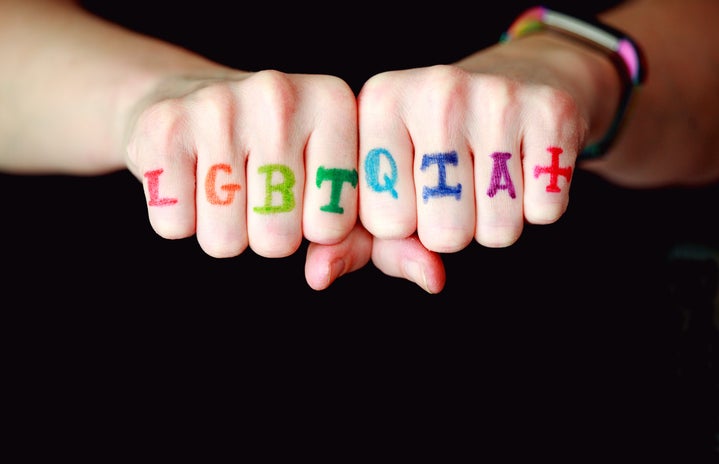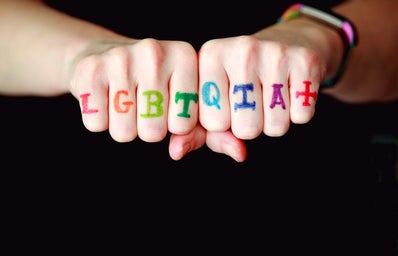More and more Queer representation has been appearing on screen in recent years, but asexuality and aromanticism remain underrepresented. I can still count the amount of asexual and/or aromantic characters I’ve seen on television on one hand, despite being a large part of the LGBTQIA+ community (and yes, the “A” stands for “asexual/aromantic”).
This underrepresentation means that a lot of people don’t know what these terms mean, let alone understand them. Asexual (ace) is the label used for someone who experiences little to no sexual attraction. Ace people can still feel romantic or other versions of attraction, and can therefore, still date or fall in love. Aromantic (aro) is the label used to describe people who feel little to no romantic attraction. They’re not interested in dating or having a partner. People can be both aromantic and asexual (aroace), but these terms are separate things.
These labels may seem confusing if you’re not familiar with them already. It’s hard — if not impossible — to respect something that you have never seen or heard of before. If you encounter an ace and/or aro person in your life, you may not be able to understand or empathize with them. You might even say or do something to invalidate their experiences or that they would find offensive.
In an article for Psychology Today, Dr. Kevin Leo Yabut Nadal explained that “the more exposure or contact that people had to groups who were different from them, the less likely they would maintain prejudice.”
Representing groups of people in the media can help those who don’t belong to that group learn about them. TV shows and movies where ace and/or aro characters are present, their identities celebrated, and their full storylines explored pave the way to understanding for those outside of this specific community, as it has and continues to do for other communities.
In an article for HuffPost, Sara Boboltz and Kimberly Yam reference a study conducted by the University of Pennsylvania, which “showed a correlation between a range of topics as presented on TV ― violence, integration, women’s rights ― and how people thought about those issues in real life. Over time, they found that people who watched more TV embraced what they called the ‘TV view of the world.’”
There is a clear correlation between what is presented as normal and acceptable on TV and what is considered normal and acceptable in real life. So, if ace and aro stories are excluded from television and movies, how can they be understood and accepted by society?
Just as important — if not more so — is how representation impacts those who belong to the community. Imagine that the definitions of asexuality and/or aromanticism describe you. You’re starting to grow up, and you realize that the people around you are beginning to feel sexual/romantic attraction or engage in sexual/romantic activities, but you aren’t. You have no idea that being asexual and/or aromantic is a thing because nobody talks about it. You haven’t seen any characters like this on TV or in the movies. You feel defective, like there is something wrong with you.
Then, you’re enjoying a piece of media, and a character starts describing exactly what you feel. Maybe they even use the words asexual and/or aromantic. Suddenly, you are no longer alone, no longer a defect or an abnormality.
This is exactly why representation is so important. Feeling seen and understood is a powerful thing that can have tremendous impacts on people’s lives. By providing this representation in media, viewers who relate to the characters or their experiences can better understand and embrace their own identities.
“By providing youth with visual representations of people they can relate to, they can potentially save future generations from a lifetime of feeling underrepresented or misunderstood,” said Dr. Nadal on the importance of all kinds of representation.
Queer media has made fantastic strides in the mainstream in recent years, which has brought many positive effects for the Queer community. Shows like “Young Royals,” movies like “Red, White & Royal Blue,” and books like “Simon vs the Homosapiens Agenda” may easily come to mind. While these are great examples of Queer media, those that tend to get very popular are themselves lacking in diversity. Not to say that Queer media focusing on women, people of color, gender Queer, or ace/aro people do not exist — simply that they remain, for the most part, out of the spotlight.
Projects like “Heartstopper,” “Warrior Nun,” “Sex Education,” and “The Half of It” have brought more diverse Queer identities to the forefront and made great strides for the community. But out of all the media I have mentioned so far, only three characters were clearly identified as being on the ace spectrum (one of which only appears for a singular episode in “Sex Education” season two). This is a start, but it is not enough.
“People who are aro/ace, especially those who are younger, may feel underrepresented and left out of the LGBTQ+ community, primarily when their identities are not represented in the media,” explained Billie Olsen in an article for LGBTQ and All, “To make matters worse, some media representation has encouraged the narrative that non-sexual activity is weird and unnatural.”
I didn’t know that there was a word for what I was until I read “Loveless” by Alice Oseman. It’s the story of an aroace woman discovering her identity, and reading it helped me understand my own. Since then, I have noticed the glaring absence of people like me in the media I was surrounded by. Representation has power — in making individuals feel seen and valued and in making their existence visible and normalized in society — and it’s time that asexual and aromantic people got their fair slice of that power.


